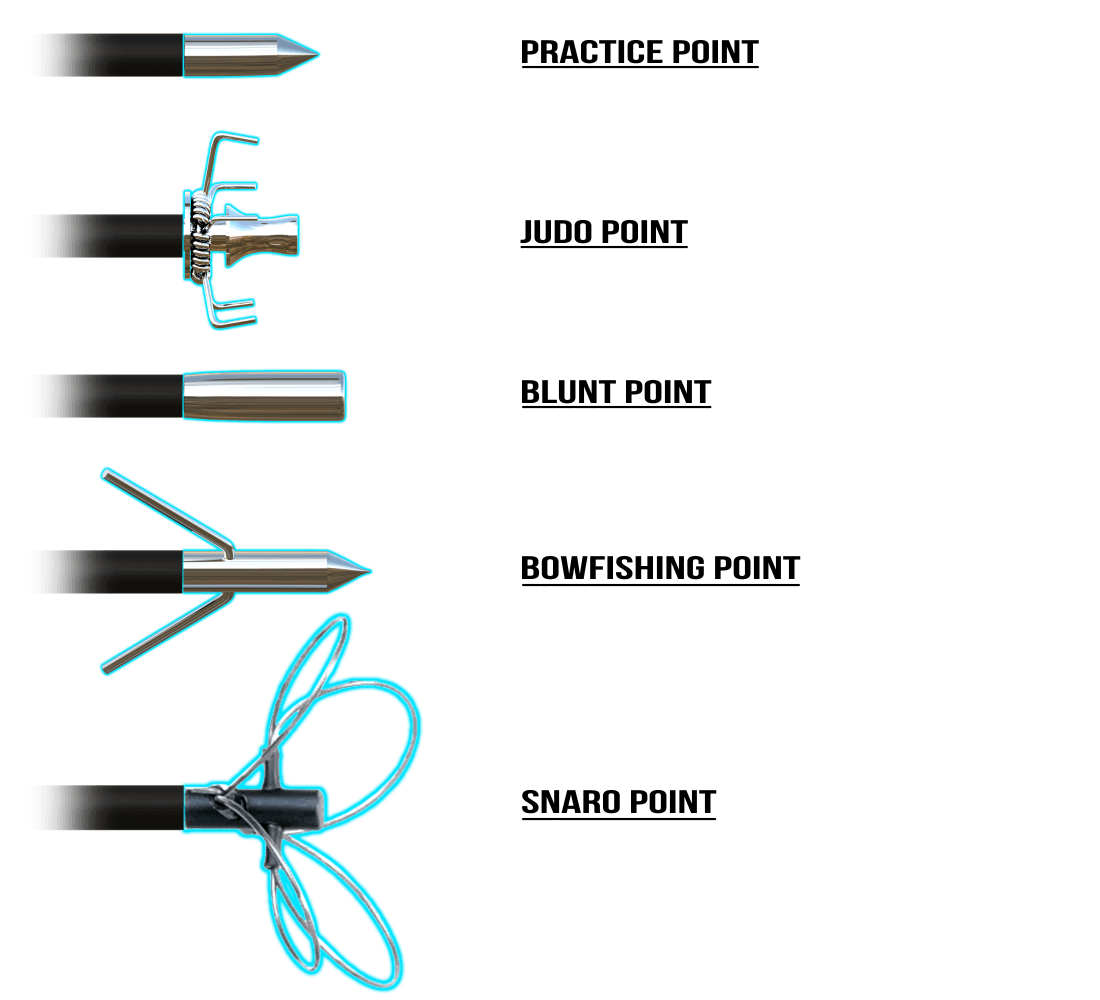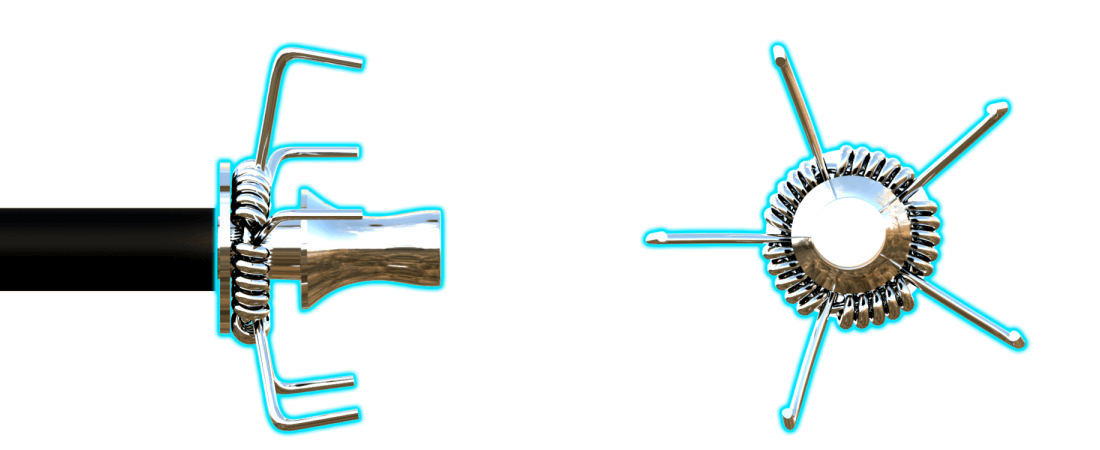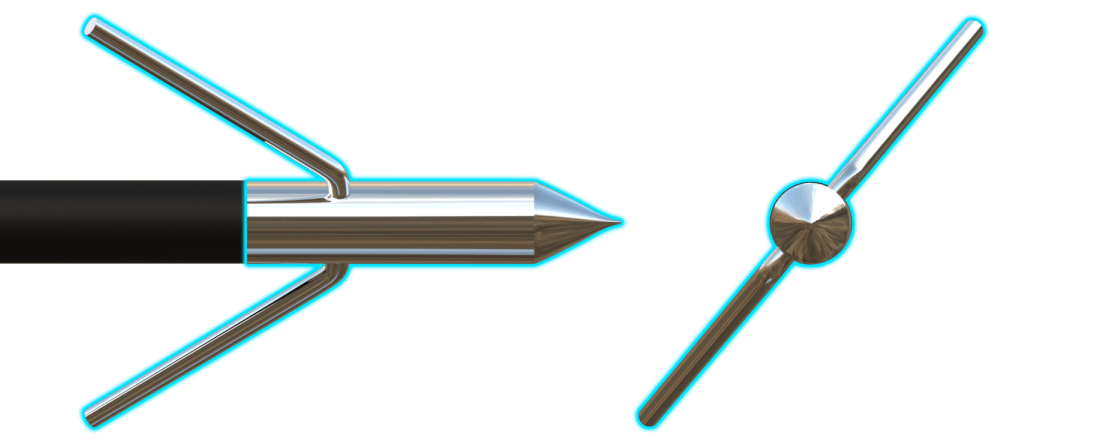Arrow parts

Nocks

Nocks are an essential component of archery equipment, most commonly made of plastic to ensure durability and consistency. Located at the rear end of the arrow shaft, these small fittings are shaped to securely clip onto the bowstring, providing a reliable connection between the arrow and the bow.
Properly designed nocks ensure the correct orientation of the arrow on the string, which is crucial for achieving optimal arrow flight. A consistent nocking point aids in shooting accuracy by allowing the archer to maintain the same draw length and arrow position with each shot. This uniformity helps to minimize variables that could affect performance, leading to improved precision and consistency in hunting.
Fletching

The plastic vanes or feathers on an arrow are referred to as fletching. Fletching creates wind drag providing stability and accuracy in flight.
Fletching will also cause the arrow to spin similar to a rifle bullet, which also improves accuracy. The most popular fletching is comprised of three or more feathers. One of the feathers will be a different color and is called the "cock" feather. The remaining feathers are referred to as the hen feathers. The type of arrow rest being used determines the angle between the bowstring and cock feather. Some archers prefer four fletches in which case there is no cock feather.
Shaft
The arrow, regardless of shaft material, must have the correct spine (stiffness) to match the bow. As an arrow is released the shaft bends before straightening in flight. Incorrect spine will cause erratic and inaccurate arrow flight. Draw length, bow weight and design, method of release, and the type of arrow head being used are all factors to consider when choosing the correct arrow for an individual.
Modern arrow shafts are made of four basic materials:
Wood shaft
- least expensive
- has a tendency to warp or splinter with age
- most popular with traditional archers
- used with long bows and recurves only
-
may shatter if shot from a compound bow
Fiberglass shaft
- most durable but relatively heavy
- primarily used for bow fishing
Aluminum shaft
- very durable
- light in weight
- popular with bow hunters and target archers
Carbon-graphite shaft
- durable
- very light
- relatively expensive
Arrow points

Arrow points are designed for various archery applications, including target practice, archery games, small game hunting and big game hunting. Using practice and hunting arrows points of the same weight ensures that your arrows will fly similarly during practice and hunting situations. This consistency is essential for accuracy.
Practice points
Designed for use with most backstops made of foam or other synthetic materials, practice points are an economical choice for high-volume shooting. They are often similar in shape and weight to hunting broadheads.

Judo points
Judo points are specialized arrow tips designed for small game like rabbits, squirrels, and grouse hunting in brushy areas and field shooting (roving). Their key feature is wire protrusions that prevent deep arrow burial in ground or vegetation. Designed to be "unloseable" in outdoor settings.

Blunt points
Blunt points are distinctive arrow tips featuring a flat, wide tip that delivers shock impact, making them ideal for hunting small game like squirrels and rabbits. Also suitable for certain types of target shooting, they are available in hard rubber, plastic, or steel. Blunt points are often paired with flu-flu arrows for specialized hunting situations.

Bowfishing points
Bowfishing points are specialized steel tips designed for bowfishing, engineered to penetrate the tough scales of rough fish species like carp and gar. They typically feature a removable tip to facilitate easier extraction of the fish from the arrow.

Snaro® points
Snaro® points are specialized arrow points designed for hunting pheasants and other upland game birds. They feature a flat nose for delivering shock and a distinctive four-hoop design to potentially tangle with the bird's wings. Available in 3-inch or 6-inch wingspans, Snaro® points are used with flu-flu arrows for shooting at flushing birds.
